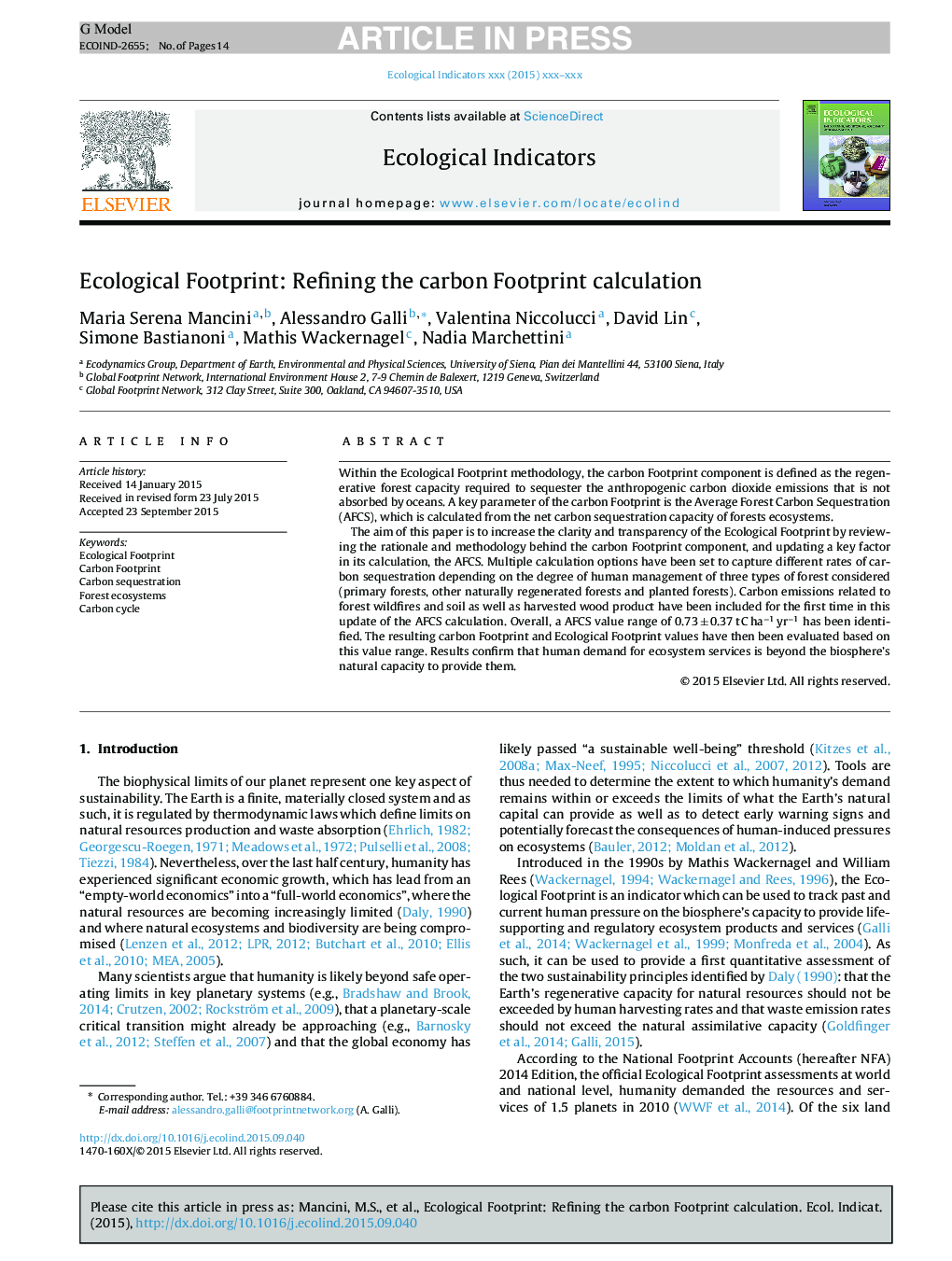| Article ID | Journal | Published Year | Pages | File Type |
|---|---|---|---|---|
| 6293616 | Ecological Indicators | 2016 | 14 Pages |
Abstract
The aim of this paper is to increase the clarity and transparency of the Ecological Footprint by reviewing the rationale and methodology behind the carbon Footprint component, and updating a key factor in its calculation, the AFCS. Multiple calculation options have been set to capture different rates of carbon sequestration depending on the degree of human management of three types of forest considered (primary forests, other naturally regenerated forests and planted forests). Carbon emissions related to forest wildfires and soil as well as harvested wood product have been included for the first time in this update of the AFCS calculation. Overall, a AFCS value range of 0.73 ± 0.37 t C haâ1 yrâ1 has been identified. The resulting carbon Footprint and Ecological Footprint values have then been evaluated based on this value range. Results confirm that human demand for ecosystem services is beyond the biosphere's natural capacity to provide them.
Related Topics
Life Sciences
Agricultural and Biological Sciences
Ecology, Evolution, Behavior and Systematics
Authors
Maria Serena Mancini, Alessandro Galli, Valentina Niccolucci, David Lin, Simone Bastianoni, Mathis Wackernagel, Nadia Marchettini,
